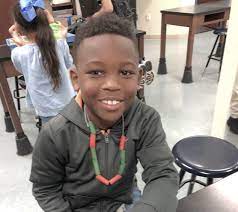If school has started and there are still unchecked items on your getting-ready list, that’s not a disaster—assuming your priorities were in order. You may have a problem, however, if you spent too much “Priority A” time on what should have stayed Priority C items a little longer.
Prioritizing schedules isn’t easy for most people, which is why we suggest you use a good planner app. There are tasks that belong on the “immediate” list and tasks that aren’t all that urgent.
Things to Complete ASAP

(before the school year starts whenever possible)
Update all Individualized Education Programs and establish relationships with everyone who will be involved with each IEP.
Have your children meet their new teachers—virtually or in person—ahead of time if at all possible.
If a child is starting at a new school, practice the route in advance. If you won’t be accompanying your children the whole way, make sure they know how to recognize the school bus, where to cross the street, etc.
Implement new everyday routines, adjusting get-up (and go-to-bed) times, chores, meal planning, and everyone’s personal organization to fit the school schedule.
Set up areas for homework and for organizing school supplies.
If a child needs medication, double-check that they have a secure way to carry it.
Check your digital connections for school contacts, online forms, and virtual classes/meetings where applicable.
If your child will eat in a school cafeteria, make sure to inform the staff of any food allergies—and any strong distastes that may trigger behavioral reactions. To be extra safe, make a habit of personally previewing each week’s menus.
Collect basic supplies—writing tools, notebooks, important digital downloads, assistive technology.
(Important note: you don’t have to get everything before the first day, as will be further explained in the following sections. Back-to-school shopping has its Priority A, B, and C lists too.)
Things to Complete the First Week
Get a full list of recommended supplies, via direct teacher input. The person most directly involved is your best source of information on what’s really needed—and what you don’t need to spend money on.
Establish an after-school ritual of reviewing your child’s experiences, questions, and concerns. This doesn’t have to be the first thing your family does after school, so don’t worry if schedules preclude that. But a set, regular time for “debriefing” will help you spot and remedy problems before they become big problems.
Give an “About My Child” portfolio to every teacher and staff member who will interact with your child regularly. Knowing your child’s individual interests, habits, and trigger points will help everyone do what’s best for your child with minimal bother. Besides important medical and IEP notes, the portfolio could include:
- A one-page “bio” outlining your child’s abilities and sensitivities
- Pictures of family and friends interacting with the child
- An art project created by or with the child, depicting “my favorite things” or “what I did last summer”
Note from Amy Fuchs, BridgingApps Program Manager: “We did a Parenting Special Needs article some time back on ‘Using Tech to Help Develop Self-Advocacy Skills’ while familiarizing school staff with your child’s needs and preferences. The idea was basically an infographic of the child, with brief highlights of things such as likes, dislikes, and pictures of favorite hobbies or activities. It’s an easy project to do with any photo or collage app, and the apps referenced in the article—Padlet, Canva, and Adobe Spark Post (now Adobe Express)—are still available. I use Canva regularly myself, also the web-based Piktochart.”
Things to Complete the First Month
Collect any supplies your child still needs.
Fill out your child’s school wardrobe for fall and winter. (Spring can wait, especially if your child is still outgrowing clothes.) While it’s fine to invest in one or two good outfits before school begins, it’s a risky venture to fill the whole closet in advance. All too often, things quickly go out of style or out of favor, and you could be stuck with a pile of clothes your child won’t wear—and with a depleted clothing budget.
Nurture the habit of noticing and expecting good things in this school year—a valuable habit for your child and yourself.

